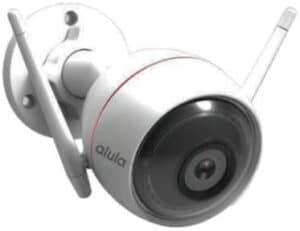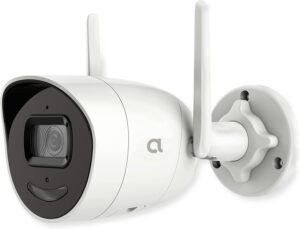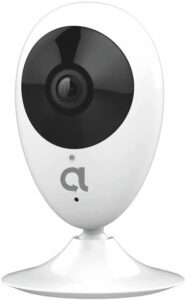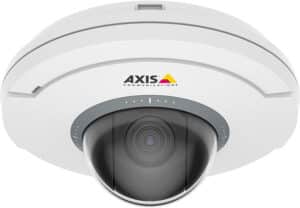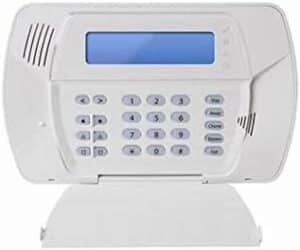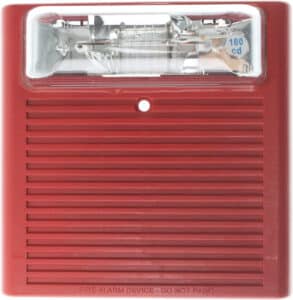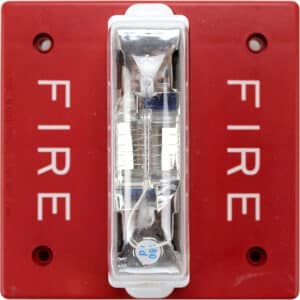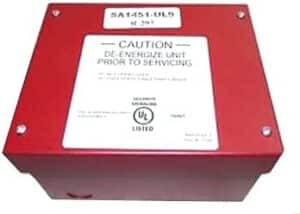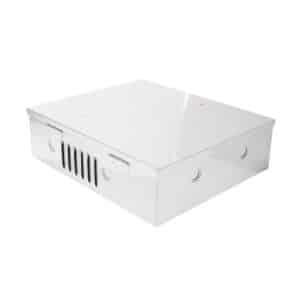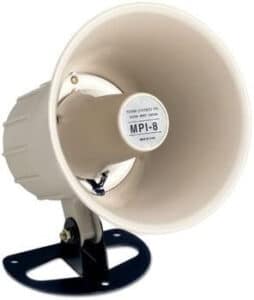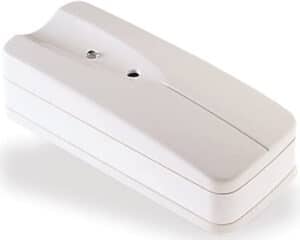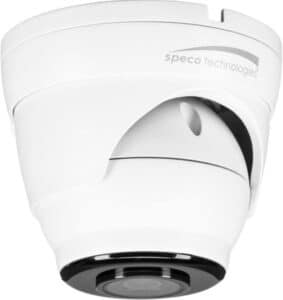Choosing the Best Indoor Camera for Elderly Care: Factors to Consider
As we age, we become more vulnerable to accidents and health problems. This is why taking care of our elderly loved ones is of utmost importance. One key aspect of elderly care is monitoring them using indoor cameras. It gives us peace of mind knowing that we can keep an eye on them, even when we are not physically there. However, with all the options available in the market, choosing the best indoor camera for elderly care can be overwhelming.
In this article, we will discuss the factors to consider when choosing the best indoor camera for your elderly loved ones. So, let’s dive into the world of indoor cameras and give our elderly loved ones the care they deserve.
If you want to learn more on where elderly can buy home security, visit our post here.
Table of Contents
Overview of Indoor Cameras for Elderly Care
If you have an elderly person that needs care, you will want a home monitoring system so that they can live independently. One type of monitoring system is an Indoor Camera for Elderly Care. Here is a look at these systems.
- Indoor Camera for Elderly Care – These systems can monitor your elderly family member’s daily routine and alert you if they fall or require medical attention. Some systems have two-way voice communication so that you can talk to your loved one whenever you wish.
- Caregiver Cam – These systems have a two-way audio feature, much like the indoor camera systems, but they also have a built-in camera and motion sensor. This means that the camera will detect movement and begin recording video.
- Bathroom Video Monitor – These systems have a built-in camera that monitors the activity in a bathroom. They are ideal for use after a fall or medical incident. They can also help to identify potential safety hazards, such as slippery floors.
- Wireless Monitors – These systems allow you to monitor your loved one’s activities from anywhere in the world. They are ideal for long-distance monitoring and ensure that you can always be available to help if something happens.
Essential Features to Look for in Indoor Cameras for Elderly Care
If you need an indoor camera for an elderly or sick loved one, you will need to buy one that is easy to use and has advanced features.
Look for a camera with WiFi. This allows you to watch the action on your phone or computer.
Two-way audio is important. This allows you and/or your loved one to speak to whoever is in front of the camera.
A wide field of view is helpful. This will allow the camera to capture more area. This can reduce the risk of missing anything important. Night vision is also important. This will allow you to see what’s going on even in low light.
Night vision is a must. You will want to be able to clearly see what is going on at night.
Finally, motion detection is a must-have feature. This will alert you when movement is detected. This way, you can respond quickly if needed.
Types of Indoor Cameras for Elderly Care
Elderly care monitoring can be a tricky business. No matter how close you are to someone, you’ll only have sporadic chances to see how they’re feeling.
For this reason, many families have turned to indoor security cameras. There are a handful of great indoor cameras on the market, though – and each one has its own unique benefits and drawbacks.
Let’s take a look at some popular options:
The most basic indoor cameras all have the same basic features:
Cloud storage. These cameras automatically upload the footage they record to cloud storage. This makes it easy to access the footage at any time – and ensures that you won’t lose the footage if the camera is damaged or stolen.
Motion detection. When the camera detects movement, it automatically starts recording and saves the footage to cloud storage.
Plus, some models also have additional features:
Remote live view. You can log into the cloud storage and watch live footage from the camera’s location. This makes a big difference if you’re worried about elderly family members wandering off.
Night vision capabilities. These cameras use infrared LEDs to amplify the amount of light they receive, allowing them to record footage even in the dark.
Webcams can also come in handy:
Very inexpensive. Webcams tend to be inexpensive, making it easier to gift them to elderly family members and keep an eye on them from afar.
Easy installation. Webcams can usually be mounted to a wall using simple screws or adhesives.
Other types of indoor cameras include:
- PTZ (pan, tilt, zoom) cameras. These cameras can be remotely controlled to change the angle of the lens – and are ideal for the elderly, as they’re easy for them to use.
- Hidden cameras. Some families don’t want to use cameras in their living room, bathroom, or bedroom. For these families, a hidden camera is a great option to keep an eye on elderly family members.
- Wireless cameras. These cameras record video footage to cloud storage, but they can also stream the footage live to your mobile device.
How to Determine the Ideal Placement of Indoor Cameras for Elderly Care
Along with monitoring the health condition of elderly people, it’s also necessary to check on their happiness.
Indoor cameras for the elderly can be a good alternative for the elderly people to go outdoors. They can enjoy the scenery from the cameras, and family members can also monitor them easily, which helps to prevent many potential risks.
It’s important that the camera is placed in a good location. It should be placed in a place where the elderly can easily see the camera and monitor the situation. It should also be placed in a place that is out of reach from children or strangers since they may try to tamper with the camera or use it in an inappropriate way.
The camera should also be placed in a place that is well-lit, as it will make it easier for the elderly to see the footage clearly. Additionally, it should be placed in an area that is not too far away from the elderly person, so they can easily access the camera when needed.
The camera should also be equipped with a microphone so that the elderly can hear the sound clearly. Furthermore, it should be equipped with a motion sensor so that it will start recording when it detects any movement, which can help to alert the elderly if there is an intruder.
Finally, the camera should be connected to a reliable internet service provider so that the elderly can access the footage remotely.
Privacy Concerns When Installing Indoor Cameras for Elderly Care
A security camera is a great addition to help keep an eye on the elderly. But, because the camera is always on, it’s important to ensure that you follow a few privacy tips.
Never leave the camera on when the elderly are not home. The elderly are most vulnerable when at home by themselves, so it is important that the camera is turned off when no one is there.
When the camera is on, ensure that it doesn’t record all of the time. For example, the camera could be configured to start recording when someone enters a room, but stop recording when they leave the room. This will reduce the risk of the camera recording when the elderly are alone.
It is also important to ensure that no one is able to access the camera footage without the permission of the elderly. This could mean setting up a password on the camera or using a secure cloud storage system.
Finally, make sure to inform the elderly of the camera’s use and explain why it’s being used. This will ensure that they understand the importance of the camera and that their privacy is respected.
Indoor Camera Systems vs. Traditional Home Monitoring Systems for Elderly Care
Indoor camera systems or traditional home monitoring systems can be easily accessed and provide for peace of mind. Consider a monitoring system, so you can have peace of mind, knowing your elderly relative is safe.
Traditional home monitoring systems
Many traditional home monitoring systems use simple cameras placed around the home. This provides a visual to the family members, so that they can see the living condition of the elderly, and determine whether their living conditions need attention.
These systems include cameras, monitors, digital recorders, and sensors. The camera monitors the activities within the home, while a digital recorder keeps track of the images and video recorded in the camera, and sensors alert the family if limits or boundaries are crossed.
Indoor camera systems
Indoor camera systems are more advanced than traditional home monitoring systems. They provide an interactive way to monitor the elderly in the home. These systems provide live streaming of the elderly’s activities and can be accessed remotely via a smartphone.
The camera systems also feature motion and sound detection, two-way audio, night vision, and facial recognition technologies. With these features, family members can monitor their elderly loved one’s activities, ensure that the elderly is not in danger, and communicate with the elderly in real-time.
Comparison of Wired and Wireless Indoor Cameras for Elderly Care
For the elderly, even going to the bathroom can be a very difficult task, especially if they are confined to a wheelchair or bed. For many elderly, being able to take a rest on the couch instead of in an uncomfortable bed can make a world of difference. However, in order to keep them safe, you first have to be able to monitor them.
While both wired and wireless cameras can bring you peace of mind, each has their own pros and cons that you should keep in mind before making your purchase.
Wired cameras require a physical connection to the router in order to operate, which can be difficult to install in an older home. On the other hand, wireless cameras are easier to install and more versatile, allowing you to place the camera in any part of the home without the need for extra wiring.
Wired cameras can be more reliable for elderly care, as they are not prone to interference from other wireless devices. However, they can also be more expensive. Wireless cameras can also be more prone to interference, but will usually be less expensive.
In short, if you’re looking for an easy and cost-effective way to monitor your elderly loved one, a wireless camera might be the best option. However, if you’re looking for a more reliable and secure option, a wired camera is the way to go.
DIY Installation of Indoor Cameras for Elderly Care
Installing security cameras in your home for elderly care is very easy.
The camera only needs to be connected to your Wi-Fi network, which is easy to set up as WiFi cameras offer an integrated app that allows you to access the camera from anywhere. The camera records in 720p high definition.
The indoor camera has a 4X digital zoom and infrared night vision that allows you to see what’s going on in even the darkest rooms of your home. You can also set a schedule so the camera only records when it senses activity.
This camera is easy to install and works on both Android and Apple devices. To activate night vision, simply press the “eye” symbol on the side of the camera. In addition, the camera has motion detection and alert capabilities, so you can receive real-time notifications when motion is detected. This feature is especially useful for keeping an eye on elderly care.
You can keep an eye on your loved one using indoor cameras for elderly care if you don’t have time or energy to continuously be there. It’s easy to set up and use, and it provides peace of mind that the elderly are well taken care of.
Recommendations for Supporting Elderly Care Monitoring with Indoor Cameras
Here are the recommendations for supporting elderly care monitoring with indoor cameras.
The IP camera has many advantages for the elderly care monitoring. It transmits clear images, is easy to manage, and has audio as well.
IP cameras can be placed anywhere and have the function to zoom in. This makes it easy to detect any danger.
IP Cameras provide a good solution for elderly people. They can monitor their relatives safety at any time. IP cameras are also easily installable and can be set up according to the elderly care needs. It can be set to detect motion, sound, and other activities.
For safety purposes, the elderly should be informed about the IP camera and be aware of its presence. They should also be aware of the privacy of the camera and the footage that it records.
It is also important to provide a secure connection and encryption for the IP camera to ensure that the footage is secure.
As a final consideration, it is important to ensure that the elderly care monitoring system is regularly maintained and updated to ensure maximum efficiency.
How to Maximize the Functionality of Your Indoor Cameras for Elderly Care
- Make sure you purchase a camera that has night vision. Most indoor cameras come with this feature, but it’s important to check if your camera does.
- If you have children in the home, make sure the cameras are hidden, or give them a camera of their own. Having cameras visible throughout your home can lead to an invasion of privacy.
- Make sure you have hidden storage space in your home. You can put extra cameras in these spaces, so you’re not worried about them being visible.
- Buy remote viewing capabilities. Being able to remote view your cameras from another location can improve your security.
- Set up alerts. So, if someone breaks into your home, you’ll instantly know.
- Set up sound alarms. If your alarm goes off, you’ll instantly know.
- Set up motion detection. If motion is detected, you’ll instantly know.
- Always keep your cameras up to date. Make sure they always have new batteries, and that you check them regularly.
- Have all of your cameras in the same place. It’s easier for police to know where to look if something happens.
- Place cameras in the bedrooms. Most elderly tend to sleep in these rooms at night, so being able to see any suspicious activity is very beneficial.
- Install cameras in bathrooms. Most elderly can be forgetful, so it’s always good to have a camera in the bathroom.
Conclusion
After much research and consideration, we have learned that choosing the best indoor camera for elderly care involves several factors. Features such as motion detection, night vision, and two-way audio can be instrumental in ensuring the safety and well-being of our loved ones. It’s essential to consider the camera’s placement and compatibility with other devices to maximize its effectiveness.
To make sure your loved one’s home is secure, I highly recommend checking out Xcessory Zone’s e-commerce DIY home security products. They provide a range of cost-effective options that don’t compromise on quality. These products are easy to install, come with excellent customer support, and will give you peace of mind.
Don’t wait until a situation arises to invest in your loved one’s safety. Take action now and make sure you provide the best care for them using the best indoor camera for elderly care. Xcessory Zone’s products may be a great fit for you. Visit their website today and start securing your loved one’s home.
FAQs
What are the most important features to look for when choosing an indoor camera for elderly care?
When choosing an indoor camera for elderly care, it’s important to consider features such as motion detection, two-way audio, night vision, remote access, and continuous recording. These features ensure that you can monitor your loved one’s safety and well-being around the clock, even when you’re not physically present.
How many cameras should be installed to effectively monitor an elderly person living alone?
The number of cameras required to effectively monitor an elderly person living alone depends on the size of their living space and their level of mobility. In general, it’s recommended to have at least one camera installed in each room of the house, with a focus on high-traffic areas such as the living room, kitchen, and bedroom. Additionally, if there are specific areas that pose a greater risk of falls or accidents (such as the bathroom), it may be necessary to install additional cameras in those locations.
Are there any privacy concerns to consider when using indoor cameras for elderly care?
Yes, there are privacy concerns to consider when using indoor cameras for elderly care. It’s important to ensure that your loved one is aware of the cameras and comfortable with being monitored. Additionally, it’s important to choose a camera that offers secure and private video storage, and to minimize the risk of hacking or unauthorized access by choosing reputable brands and regularly updating your cameras’ firmware.
Finally, it’s important to use the cameras responsibly and ethically, using the footage only for the intended purpose of ensuring your loved one’s safety and well-being.
Meet Our Partners!




